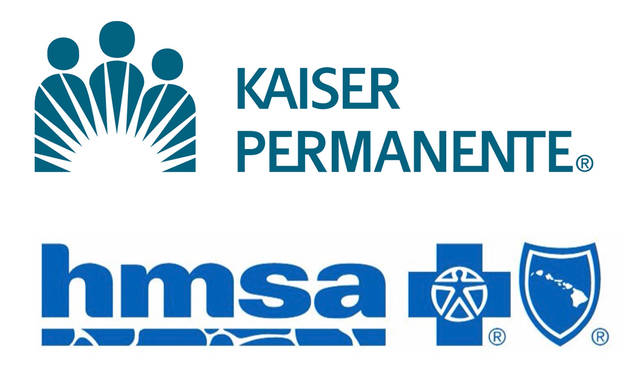The Hawaii Medical Service Association is seeking to boost health insurance rates next year by an average 27.1 percent, while Kaiser Permanente is proposing a 19.9 percent rate hike, together affecting nearly 33,000 residents covered by the federal Affordable Care
The Hawaii Medical Service Association is seeking to boost health insurance rates next year by an average 27.1 percent, while Kaiser Permanente is proposing a 19.9 percent rate hike, together affecting nearly 33,000 residents covered by the federal Affordable Care Act.
The state’s largest health insurers filed the proposed rates with the federal Centers for Medicare and Medicaid Services, which oversees policies under the ACA, or Obamacare.
The health insurance companies appear to blame policies of both former President Barack Obama and President Donald Trump for the proposed rate increases. People insured through Obamacare have had higher medical expenses than expected, and that has caused premiums to go up each year since the program began. Under Trump, the insurance companies stand to lose a federal subsidy that helped keep the premium increases lower.
Republicans last week failed to repeal Obama’s health care law, which requires most Americans to purchase insurance or face tax penalties. Continuation of the law leaves insurance companies with the same problem of covering the high cost of the newly insured population.
The proposed rate increases also take into account the possibility that Trump will cut federal payments to insurance companies, HMSA said. The federal payments, known as cost reduction subsidies, were designed to lower the out-of-pocket costs and deductibles for low-income patients. Trump repeatedly has threatened to end the subsidies and let Obamacare “implode.”
“Our (rate) request comes in a very difficult environment. Policymakers in Washington, D.C., have not determined what course to follow with the ACA, creating uncertainty nationally and in Hawaii,” HMSA said in its filing on the federal agency’s website, HealthCare.gov. “The individual ACA market continues to be very financially unstable because the number of members using (a) significant amount of health benefits continues to greatly outnumber members using a modest amount of benefits. We realize that any rate increase creates hardship for some members. However, the increase is necessary to cover the costs of covering this population and keeping the plan viable in the future.”
HMSA reported losses of $48 million in 2015 and 2016 for ACA individual plans and expects a third year of losses for 2017.
HMSA’s premium increases for 19,702 members range from 9.1 percent for the highest-deductible catastrophic policy to 34.8 percent for the lowest premium health maintenance organization plan. Kaiser’s proposed hikes for 13,195 individuals range from 14.7 to 37.4 percent.
The insurers, along with smaller health plans, including the University Health Alliance and Hawaii Medical Assurance Association, are also seeking to raise rates for small-business members. When combined with individuals, the number of people affected by the higher premiums is roughly 74,000, according to the state Insurance Division.
“We don’t have any information to fight or combat or at least to legitimize those increases,” said Stephen Nii, owner of Nii Superette Inc., who along with his eight employees is covered under Kaiser’s ACA policy. “You’re taking the salesman’s word that this is what it costs.”
Nii estimates the average insurance cost per employee will rise next year to $600 per month from $500.
“If I can’t find more money to fund my health care then because of a 20 percent rate increase, 1 out of every 5 people are going to lose their insurance. That’s the reality.”
According to the state Insurance Division, 59 percent of the 16,711 individuals currently enrolled in ACA plans through HealthCare.gov are eligible for the cost-share reductions that Trump might eliminate. If federal payments stop, Hawaii residents could lose $9.5 million in subsidies, or $963 per person, annually. In addition, 82 percent of locals in Obamacare plans are eligible for advanced premium tax credits averaging more than $350 per person per month.
Consumers can also choose to purchase ACA coverage directly through insurers but aren’t eligible for subsidies or tax credits unless they buy policies through HealthCare.gov.



